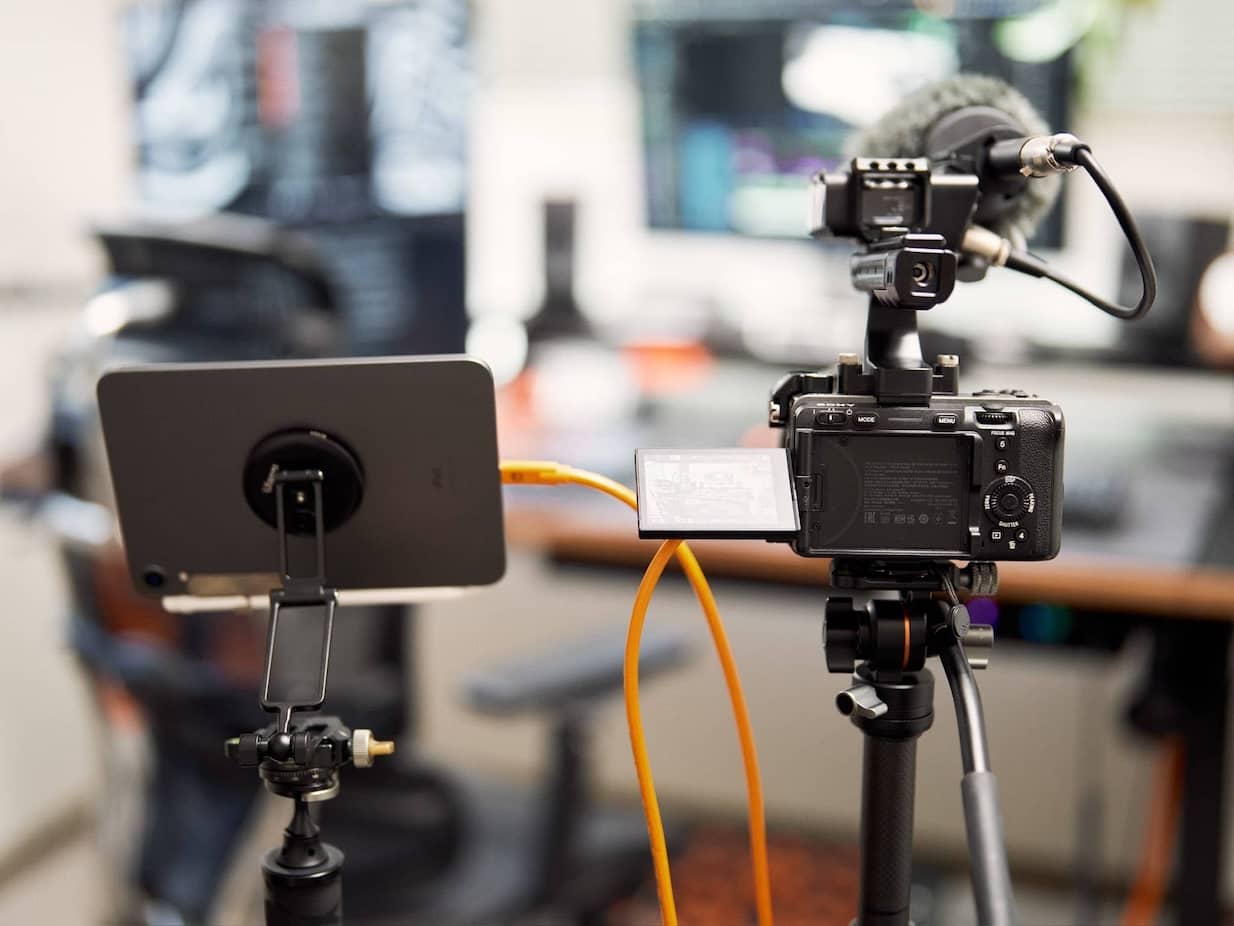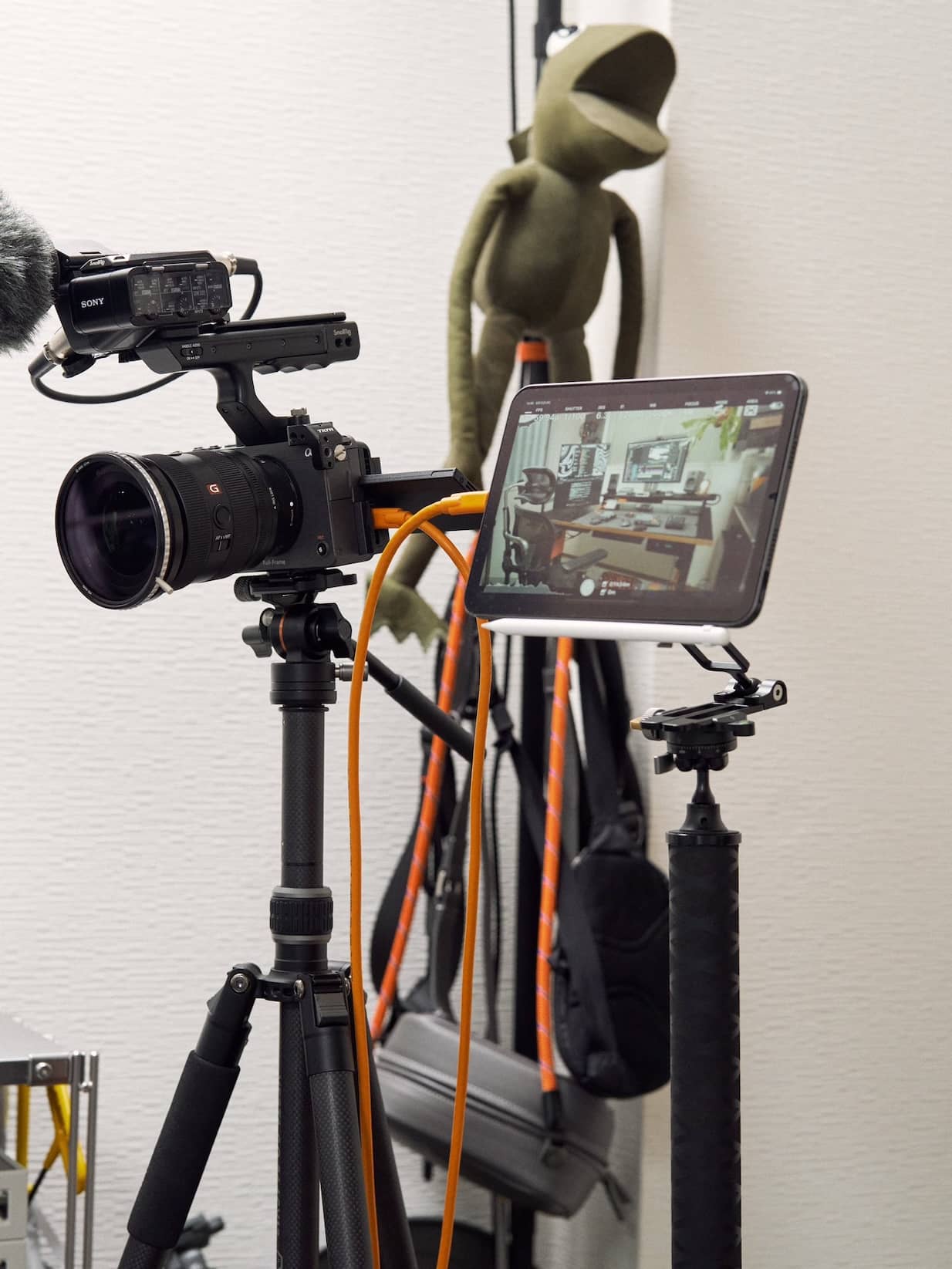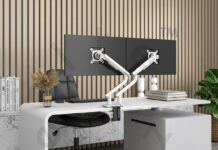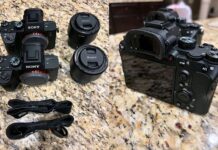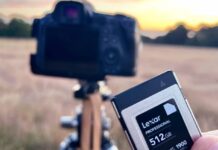Think of the need for tripods as a concession to a minor flaw in the human body. Hands will shake, and a short fuse of impatience will eventually become exhausted. We’re not robots, although some members of our team have been known to fail website captcha tests, causing us some doubt.
At any rate, there are other scenarios where you’ll employ a camera tripod. Long exposures, experimental shots with “what-happens-if-I- do-this” iso and aperture changes require the elimination of lens shakes. Low light photography warrants the fitting of a tripod, too, as does the setting up of a hard to achieve composition.
Just as one example, imagine a time-lapse photography enthusiast or someone who’s looking to get started in astrophotography. In the former case, hours of rock-solid, locked in focus and composition are essential so that the subject looks as if it’s accelerating through time. For the latter situation, faint celestial objects won’t become visible until a camera sensor has switched over to long exposure mode to capture traces of starlight that are invisible to the naked eyes.
So, what are the best tripods for photography? Is one camera support system more stable than a branded competitor? Are there inexpensive third-party rigs that do the same job for a fraction of the cost? Important questions, and we’re here to provide the answers. Let’s just head out to the desert with a few of our best testers in tow. Don’t worry, we’ll be bringing them back, probably.
Standingdesktopper's pick
A Tripod Checklist for Photographers
Durability is key in a best tripods for photography list. Even if the gear is going to sit in a dry studio all the time, the occasional knock can be expected as working studios are nonstop circus acts of movement, always working to set up the next shot. Robust but lightweight, then, that’s what we’re betting on.
Other features you’ll be needing include a quick, smart folding action, more for outdoor photography, and a highly manipulable tilt head mechanism. We recommend a quick release plate with corresponding high-quality locking mechanisms, the better to assure a stabilized composition for as long as required.
Locking legs, rubberized accouterments, and the option to attach multipurpose tripod accessories as needed, there’s a whole smorgasbord of possibilities to explore when you enter the confusing world of tripod buying.
Don’t worry, we’ve done the work for you by reviewing a short list of the best tripods for photography enthusiasts. We’ll test these camera support systems, pushing them to the point of destruction in all sorts of working environments.
Our Top Tripod Recommendations
This selection of camera support systems, tripods, includes several high-priced possibilities, plus models that suit studios, products that can be carried into the wilderness for low-light shots, and general-purpose options for multiple roles.
Magnus PV-3330G Tripod
The Magnus PV-3330G is a good multipurpose starter tripod, with its solidly constructed geared center column providing plenty of room for several types of camera bodies. A newb can bring their smartphone or GoPro camera, knowing they have access to a full 66.7” of telescoping support thanks to the included head adapter.
To activate the telescoping sections, we used the rotating gear control on the side. It looks a little like the wind-up control on an old jack-in-the-box. Using it to raise the tripod head, it allowed finite control of the camera along the y-axis (height), so there was no awkward twisting or locking dials, just fine-tuned elevation adjustment.
The splayed legs seemed solid, sliding smoothly out from their black tubular housings without any effort, and they locked down with the flip of three tidily shaped black clips. As for the head and quick release plate, it tilts and locks, providing the kind of flexibility needed for all sorts of demanding compositions.
All-in-all, collapsing down to a 24.4” size, the Magnus PV-3330G is easy to carry and sturdy, but it won’t easily support a professional DSLR and its large battery pack. Expect to purchase this budget-friendly option as a companion piece for a Go-Pro or a compact mirrorless camera body. Features of interest include a weight of 2.6 lbs, flip leg locks, and a 360° head rotation that’ll lock at a side-angle of 90°.
Manfrotto MVH502A Tripod System
From budget-friendly beginner to professional-grade DSLR usage, we’re shifting up into the rarefied heights of cinematic filming. As you probably know, many leading cameras models have inbuilt video modes, and this tripod system has been designed to accommodate this feature.
We put the Manfrotto MVH502A (MVH502A, 546GB-1) to work as a photography companion piece, but it could just as easily have taken on the role of short movie filming accessory, just like its big brother the 509HD. The website advertised fluid head support system assures frictionless pan and tilt control. Then there’s the signature bridging profile, designed to make room for the dual dials.
On further checking, the two dials are located on the side of the head and are used to adjust the speed and smoothness of the camera’s movement in each direction, providing greater control over camera compositions. This is all well and good, but with all of these levers and the dual-leg construction, this isn’t the most portable tripod.
Expect to use this unit as a support system for time-lapse photography or low-light shots in situations that call for static shoots. At 15 lbs of solidly constructed aluminum, this is a tripod for quick locking a Nikon D6 or some other professional grade DSLR. As such, it’s not priced for casual photographers, not unless you’re looking to get into filming.
Features of interest here include a mid-level telescopic leg spreader, for increased tripod ground stability, and a built-in bubble level, for those of use who are never quite certain if we’re plumb to a ground surface.
Just be prepared to have a few laughs lugging this bad boy around, as it’s definitely not the most portable option out there. Who knew photography could be such a workout? At least you’ll have a carrying bag to reduce the load slightly.
Gitzo Tripod Kit Traveler Series
For those willing to splurge, the Gitzo Kit Traveler series just makes it onto our list of best tripods for photography. It’s not that the camera support system isn’t a worthy addition, but its price is going to alienate most beginners and keen amateurs alike.
It’s another fund depleting tripod, but there are several options to buy, all made out of near-indestructible carbon fiber and all fitted with a smooth-moving ball head. What does this mean for you, the stability-seeking consumer photographer? It means lightweight durability without additional weight, plus the ball-adjusting versatility to take shots at any angle
The Gitzo we tested was the Tripod Kit Traveler α, the GK1545TA, because we happened to have a Sony α camera body, a Sony Alpha 7R full-frame camera laying around. It’s a favorite 61 MP 8K shooter of one of our testers, so there was no need to look further. It oozes quality and toughness, yet it looks quite utilitarian in appearance, belying its expensive price tag.
What’s left to say? There are twist locks on the legs and control knobs on the ball head. They offer a comfortable, solid grip. The same can be said for the center column and the ball head under the body locking plate; they’re firm and easy to make fiddly adjustments on, so there’s no composition-spoiling slippage to concern yourself with after you’ve spent an age setting a shot just so.
We like the versatility of the traveler kit. There’s even a spider-like Mini Traveler GKTBB1, sporting three stumpy legs of carbon fiber reinforced strength, perfect for those astrophotography shots that last an entire night. Tilt the compact head fitting towards the sky, and let the celestial bodies work their magic after you’ve set an extra-long exposure.
Benro Mach3 9X CF Series 3 Tripod
An eye-catching all-rounder, the Benro Mach3 CF is part of an impressive collection. This model, listed as TMA37C, is a 3 section, twist lock tripod with a full height of 63.6” of portable carbon-fiber strengthened durability. It also collapses to a minimum height of 15.1” of easy-to-carry magnesium-cast solidity.
This means it’s light and strong, yet there’s still a little heft in there due to the magnesium alloy parts. At 4.1 lbs of portability, the 9X descriptor in the label exists because the three extendable legs are segmented into three pieces, each securely twist-locked. Magnesium accents and rubberized grips further enhance the tripod’s utilitarian good looks.
A classic all-rounder made of space-age lightweight materials, we’ve come to think of the Benro as our best overall winner, although that’s only true if you consider a $300 plus price to be within your budget. Even if it’s not, a second-hand purchase might be worth considering. Or save up for this tripod. You won’t regret the few extra weeks it takes to make the purchase. Interchangeable by design, rubberized feet switch out for spiked ground locking feet, and the longer central column can be replaced with a shorter barrel, too.
There’s even a hook incorporated into the bottom of the column, perfect for adding stabilizing ballast. You’d do this if a heavier camera body was unbalancing the tripod or a rough terrain was shifting everything away from the system’s established center of gravity.
3 Legged Thing Winston 2.0 Tripod
Carbon fiber seems to be the material of choice right now, and the 3 Legged Thing Winston 2.0 is no exception to this marketing rule. As such, expect superior mechanical resilience and a reputation for increased portability.
Aside from these two popular features, the order of the day is versatility. Winston 2.0 can transform, chameleon-like, into a monopod or a mini tripod. It’s these kinds of screw-ins and plug-ins that give the system its outdoor and indoor shooting credentials. Landscape, architectural, indoor timelapse, or any other type of long-exposure shot, this gear is up to the task.
Do remember, however, that the base tripod price excludes the cost of the AirHed ball head. It’ll cost an additional extra bucks to add this angle-adjusting camera body plate to the kit. The same can probably be said for the various foot accessories and removable fittings, although a camera bag and hex key are included in-box.
Standout features on this tripod system include a maximum height of 72.8” and carrying weight of 3.8 lbs, plus an impressive 23:1 loading ratio, again courtesy of the carbon fiber build. This kit will support heavier DSLRs and lighter mirrorless cameras, too. In this instance, we had fun converting all three legs into monopods, then joining them together, like a giant selfie stick, to create a single 79” tall monopod
An Arca-Swiss ball head, fully tilt and pan adaptable, completes this package. If this isn’t the best tripod for photography purposes, then it has to be ranked as a close contender for top of the pile. There are others, of course, but this top five will land you a very capable model, whether your shooting needs are indoors or outdoors, using a tiny GoPro or a big old DSLR, complete with telephoto lens.
A Quick Recap on Your Tripod Needs
If you’re locked into a budget, the K&F Concept BA225 Carbon Fiber Tripod is a good option. For something smaller and best suited to creative steady-shots, the Joby GorillaPod 3K Flexible Mini Tripod (JB91507-BWW) also meets that criteria, with its bendy legs curling to grip uneven surfaces like a table leg or lamp post, tree branch or fence railing. The K&F tripod has the added benefit of featuring a carbon fiber construct for an affordable price.
The Winston 2.0 is a good all-round indoor and outdoor tripod, as long as you don’t require smooth panning. If that’s a dealbreaker, then the Manfrotto MVH502A might be more your speed. Just remember, getting into video tripod shooting, there’s going to be a steep jump in costs as live panning to cover video tracking adds composition complexities to your shoot.
By the way, almost all of these tripods, perhaps with the exception of the Magnus PV-3330G tripod, will accept heavy camera bodies, but that’s not to say a long lens barrel won’t throw the support system off balance. Add this tripod-offsetting weight to your tripod searching criteria, as we did, or you might end up with a tipping accident. At the very least, opt for a tripod with column hooks, a design that accepts a counterbalance.
Investing in a quality tripod, taking on the advice of our testers, you’ll find that elusive camera support tripod. You’ll also open up a world of low-light shooting opportunities and experimental photography methods, enhancing your creative abilities to no end.


